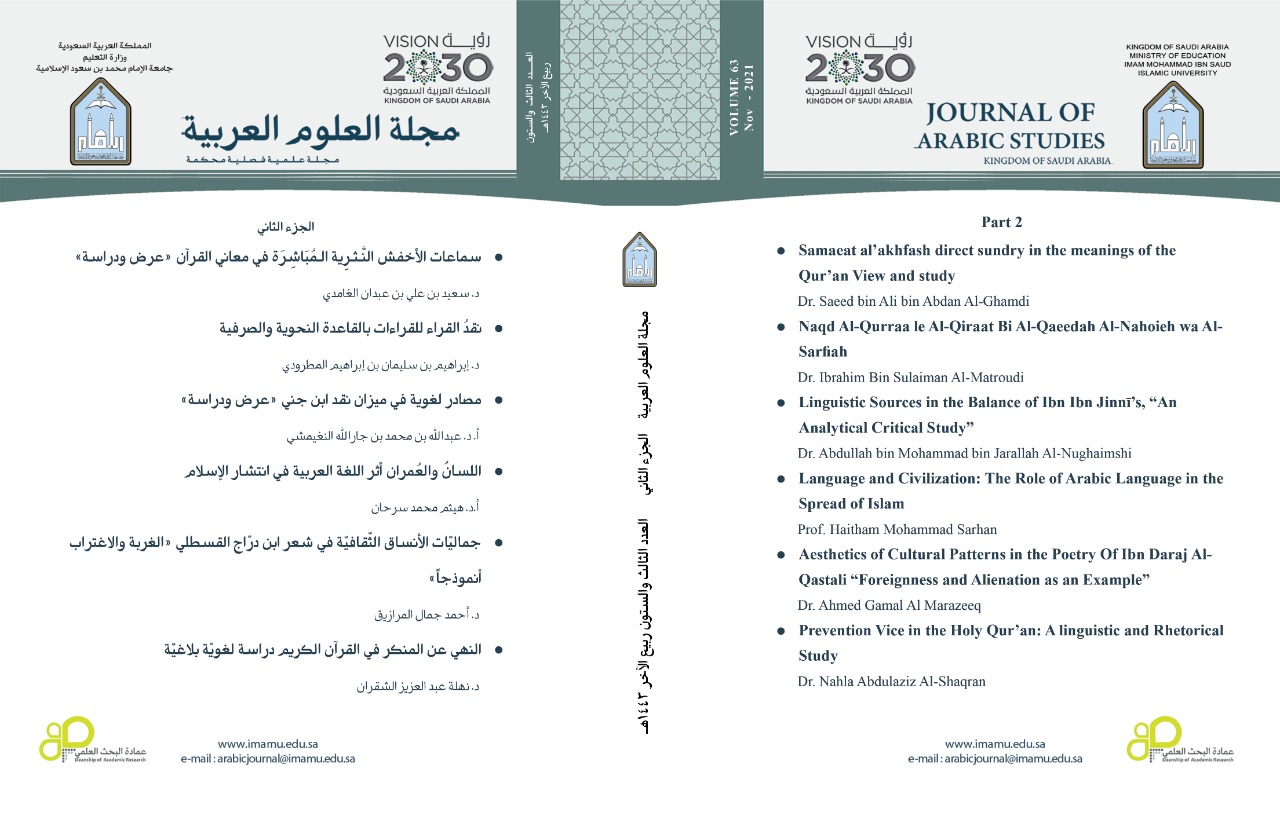Prevention Vice in the Holy Qur’an: A linguistic and Rhetorical Study
Keywords:
Holy Qur’an; prevention, vice, linguistic, syntactic, semantic, Rhetorical.Abstract
The Holy Qur’an prevents vice in certain linguistic contexts, which are the main target of the present study. The use of mufʕal pattern from the root {n-k-r} in the Holy Qur’an did not contradict the original lexical meaning of the word, and the meaning did not deviate from the typical one. Islamic law added special indications according to the context of the verses and the provisions imposed by them. Hence, vice expresses all what Shari’a prohibits including all sins, especially polytheism.
I studied the prevention of vice Linguistically and Rhetoricalally. In the first level, I explained the structure of preventing vice in the cases of liaison and separation, where the syntactic structure affected the temporal meanings of the sentence. For instance, preventing vice is mentioned sixteen times in the Holy Qur’an in verbal phrases that have different connections and separated temporal conditions..
At the second level, I studied the semantic and legal meanings of the lexical word ‘vice’ and the relationship of the semantic convergence between vice prevention with other factors. It is found that Qur’anic discourse uses prevention of vice vis-a-vis the promotion of virtue, i.e., it compares something with another thing so that they form one complete image. If the comparison exceeds promoting virtue and preventing vice, other opposites appeared to suit the new situation within the Islamic perspective of preventing vice.
In both levels, the study highlighted the importance of conducting linguistic studies to clarify the legal purposes by presenting and analyzing the verses which contain the prevention of vice. Then, studying they syntactically and semantically in order to explain their legal purposes.




